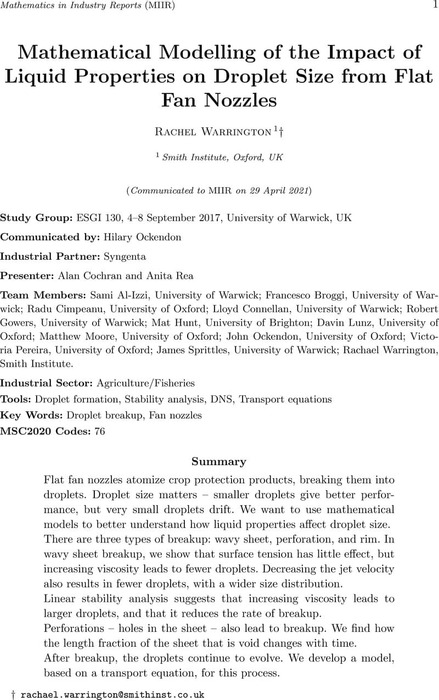Abstract
Flat fan nozzles atomize crop protection products, breaking them into droplets. Droplet size matters – smaller droplets give better performance, but very small droplets drift. We want to use mathematical models to better understand how liquid properties affect droplet size. There are three types of breakup: wavy sheet, perforation, and rim. In wavy sheet breakup, we show that surface tension has little effect, but
increasing viscosity leads to fewer droplets. Decreasing the jet velocity also results in fewer droplets, with a wider size distribution. Linear stability analysis suggests that increasing viscosity leads to larger droplets, and that it reduces the rate of breakup. Perforations – holes in the sheet – also lead to breakup. We find how the length fraction of the sheet that is void changes with time. After breakup, the droplets continue to evolve. We develop a model, based on a transport equation, for this process.
Content




